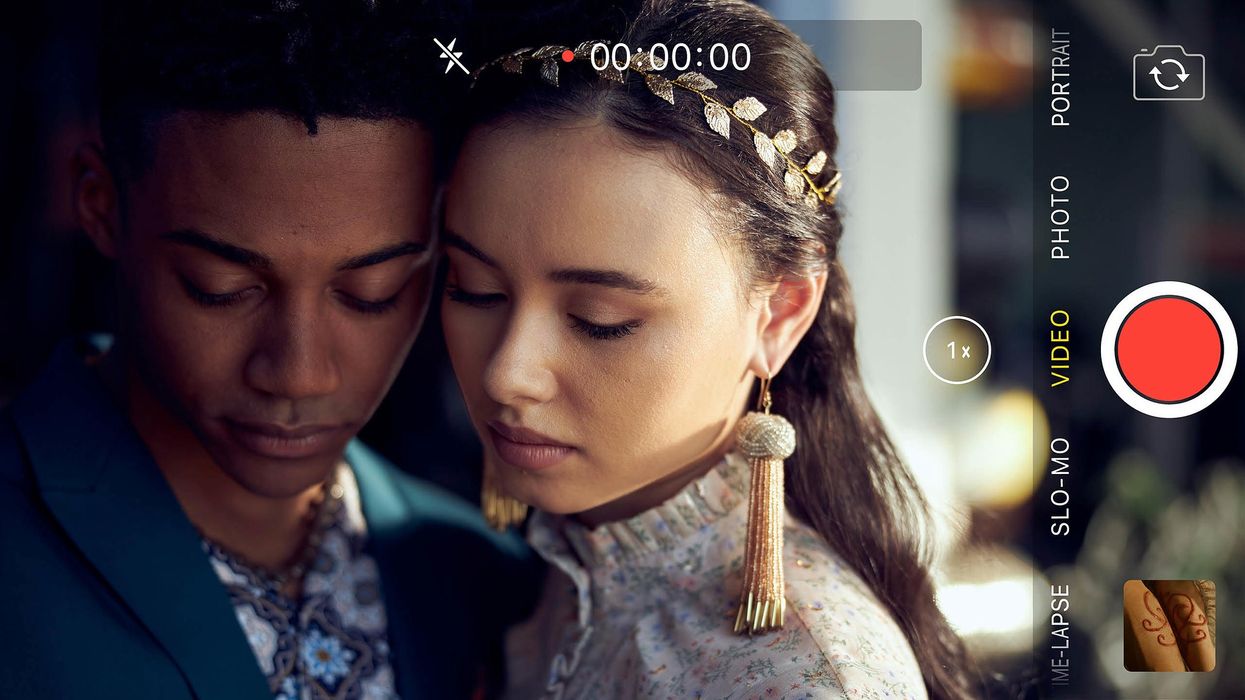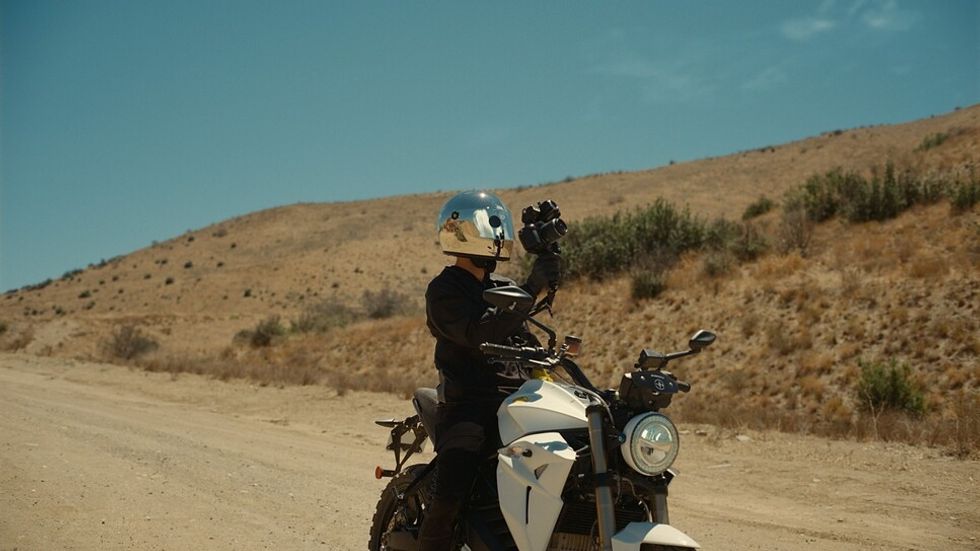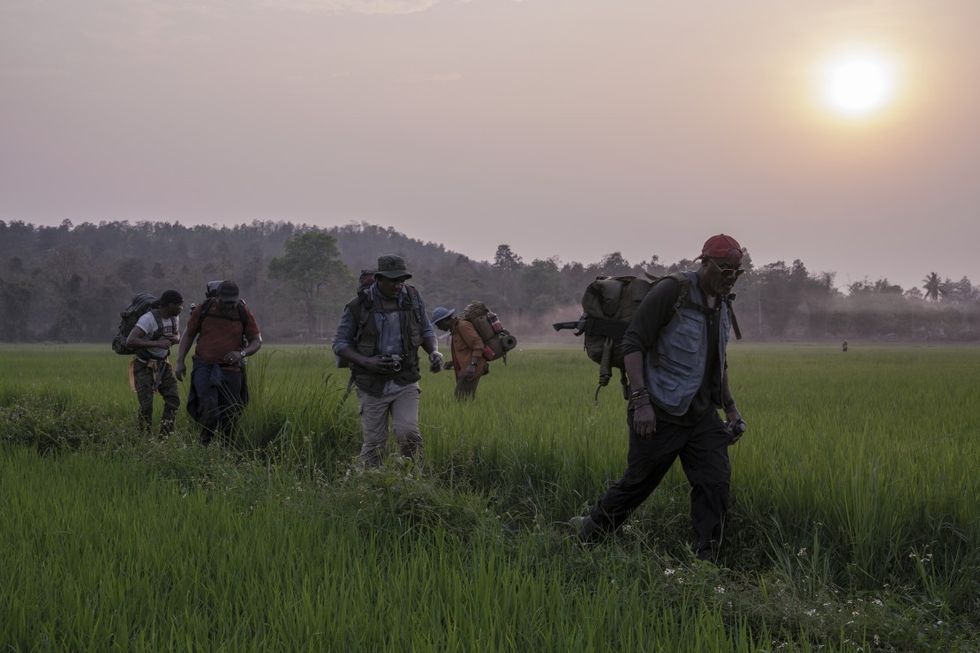Retelling the World’s Most Classic Love Story Through a Smartphone POV
It’s 2021. Of course Romeo and Juliet would fall in love over text, FaceTime, and Instagram.

In 2018, filmmaker Carey Williams was approached by the leaders of a growing filmmaking movement. They offered Williams a challenge: create a film for their canon that was told entirely through computer or phone screens. No exceptions! Williams took the challenge.
The result is R#J, the retelling of star-crossed teenagers—as seen through their smartphones. How does it work? Why do you do it? And how do you storyboard for smartphone Shakespeare?
On the eve of the premiere at the 2021 Sundance Film Festival, Williams spoke virtually with No Film School to answers these questions and more.
NFS: Why did you decide to tackle the material of Romeo and Juliet? And did you know from the beginning you were going to tell the story through the frame of phone screens?
Williams: I really felt like putting people of color in these iconic roles, and using my platform as an artist and creator to do that was attractive to me. The project was brought to me by Timur Bekmambetov and Igor Tsay of Interface Films after Emergency, my short film, had won at Sundance a couple of years ago.

NFS: You mentioned Screenlife, which is a phrase I’ve only heard of recently. Is Screenlife a genre or a dogma or film movement, or what do you take it to mean?
Williams: Even though I just made a Screenlife film, I'm still wrapping my head around all of the intricacies of it. It's basically a format where the story is told through devices. We're seeing the film as if it were through a device, whether it be a computer screen or a mobile device that someone is looking at. One of the things that's very intriguing about that is you get insight into the characters you might not normally. People do very personal stuff on their devices. I think there are a lot of revelations to characters and empathy that can be built through that interface.
As a filmmaker, it feels very limiting because you only have that subjective POV to use as you're trying to build the world for the audience. But it's also a great pathway to empathy with being able to peek into their personal lives through their devices. So it's limiting but also gives you a leg up into building that empathy.

Williams: That's what I'm saying. Early on, I was like, "How do you see this shit?" Like, I can't do a reverse shot! I had to wrap my head around how to see things. And also, whose perspective we were going to be on to see things. And how does Romeo see this? How does Juliet see this? But at the end of the day, it would force me to be more creative and really figure out ways to experience for the audience at the same time that we experience for Romeo and Juliet. And again, if we're experiencing at the same time as they are, we're with them the whole time. And that, to me, is a good thing. From doing traditional filmmaking, you have to rewire your brain to make it work.
NFS: In some ways, the sound design—for example, the sounds of the protagonist reacting to something on-screen—is functioning like the reverse shot.
Williams: I'm glad you mentioned that layer of the voices.
NFS: Maybe it puts you in the internal space of the person. That's how we experience life.
Williams: It was another thing that I wanted to put in there to bring you closer to our characters. Sometimes I'm one of the worst thinking about sound. I'll be like, "Visuals, visuals." Sound is so freaking important. It's that thing that gives you that that other layer that oftentimes is even more important than the visual: what can be heard.

Williams: No shade to the smartphone cameras, they look great, but I wasn't trying to do that. I really wanted to use a cinema camera. So we used a Blackmagic Cinema Camera and prime lenses. We used some anamorphics in a couple of places, which I loved using. We used a 20-something millimeter prime lens for most of it because that most closely mimicked what a phone field of view would look like. And then, we jumped into some anamorphics for some of the scenes that break out. Like those FaceTime calls.
I sometimes wonder what it would have been like if we would have just used phones. Like, would it have been... what kind of film it would have been. Because it would've been a lot easier to film and move around. But I don't regret it for a second. I think that Diego [Madrigal] killed it with his cinematography, he really brought a beautiful look to it. The cameras and the lenses gave it a different and better look than just using a phone.
NFS: Based on what you've learned making R#J, what’s your advice to other filmmakers?
Williams: My advice to other filmmakers is to not shy away from something that seems like a challenge that you don't quite understand how you would overcome it. As filmmakers, we're hungry to make stuff and we're hungry to get our voices out. But oftentimes, there are things getting in the way. Either rejection or you can't get the money or locations, or you name it. Don't let any of those things stop you from doing it.
I think what I learned from doing R#J myself is believing in a choice that was made and seeing it through. And also, continue to trust your collaborators. That's something that, as a filmmaker, I've been growing into. Trust the people that you work with. There's so many talented people on this film, and they're such a huge reason why this film works. My editor, Lam Nguyen, our DP, Diego Madrigal, the production designer, Evi Elias, Desi Aguilar. And then, the cast. All these people stepped into a project that no one had really done before. And we all made it together. It was a leap of faith for a lot of us and we saw it through. And it looks to be resonating. So, for other people trying to make films and get their thing going: trust your collaborators, and don’t let obstacles stop you as much as you possibly can.
Can’t take part in this year’s festivities? Check out the rest of our 2021 Sundance Film Festival coverage here.






















